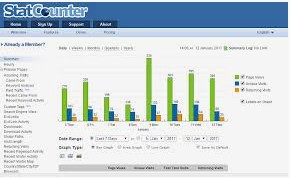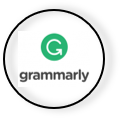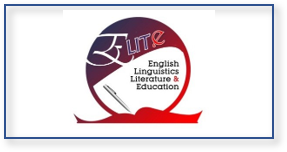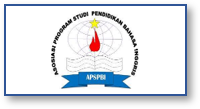Content and Language Integrated Learning Practice in English for Accounting Course
DOI:
https://doi.org/10.15642/ijet2.2020.9.2.172-181Keywords:
CLIL practice, English for Accounting, English for specific purposesAbstract
The contextualization of materials in the context of teaching English for specific purposes (ESP) is a prerequisite to gain maximum input of language knowledge. The present study sheds some light on the practice of Content and Language Integrated Learning (CLIL) approach in English for accounting course. This study involved 38 Indonesian ESP students majoring in accounting of a public university in Surakarta Indonesia as the participants. Pre-experimental research design was conducted in eight meeting during the course, including the administration of vocabulary test to examine the participants’ score in pre-test and post-test. A focus group discussion (FGD) was also carried out to reveal the students’ perception about the practice of CLIL approach in English for accounting course. The results depicted that there was a significant difference on the participants’ vocabulary scores between the pre-test and the post-test. It was also portrayed that the participants positively perceived the CLIL practice in their class. The results of this study contribute to providing fruitful insights for teachers and future researchers about CLIL practice in English language teaching, specifically in the context of teaching English for specific purposes.
Downloads
References
Atmojo, A. E. P., & Nugroho, A. (2020). EFL Classes Must Go Online! Teaching Activities and Challenges during COVID-19 Pandemic in Indonesia. Register Journal, 13(1), 49–76. https://doi.org/10.18326/rgt.v13i1.49-76
Basturkmen, H. (2014). Ideas and options in English for specific purposes. Routledge.
Bower, K. (2019). School leaders’ perspectives on content and language integrated learning in England. Language, Culture and Curriculum, 1–17. https://doi.org/10.1080/07908318.2019.1667367
British Council. (2014). Drafting a new strategy for CLIL in Europe. Recommendations from the policy
workshop in Como 10–12 March 2014. London: British Council.
Coyle, D. (2010). CLIL-A pedagogical approach from the European perspective. Second and Foreign Language Education: Encyclopedia of Language and Education, 4, 97–111.
Coyle, D., Hood, P., & Marsh, D. (2010). Content and language integrated learning. Ernst Klett Sprachen.
Fazio, A., Isidori, E., & Bartoll, Ó. C. (2015). Teaching physical education in English using CLIL methodology: A critical perspective. Procedia-Social and Behavioral Sciences, 186, 918–926.
Fitriani, I. (2016). Grass Roots’ Voices on the CLIL Implementation in Tertiary Education. Dinamika Ilmu, 16(2), 211–220.
Floris, F. D. (2013). Learning Content Subjects Through English: Indonesian High School Students’ Voices. The New English Teacher, 7(1). 49-59.
Handayani, T. (2015). Relevansi lulusan perguruan tinggi di Indonesia dengan kebutuhan tenaga kerja di era global. Jurnal Kependudukan Indonesia, 10(1), 53–64.
Hutchinson, T., & Waters, A. (1987). English for specific purposes. Cambridge university press.
Khoiriyah, K. (2020). CALL and SLA Theory: Developing A Framework to Analyze Web-based Materials for Teaching Listening Skills. IDEAS: Journal on English Language Teaching and Learning, Linguistics and Literature, 8(1). 80-92. https://doi.org/10.24256/ideas.v8i1.1296
Kirsanova, G. V, & Lazarev, V. A. (2019). Content-and language-integrated learning: a new approach to teaching engineering. In Handbook of Research on Engineering Education in a Global Context (pp. 285–295). IGI Global.
Lee, J. S. (2019). Quantity and diversity of informal digital learning of English. Language Learning and Technology, 23(1), 114–126. https://doi.org/10.125/44675
Lee, J. S., & Dressman, M. (2018). When IDLE hands make an English workshop: Informal digital learning of English and language proficiency. Tesol Quarterly, 52(2), 435–445.
Luo, J., & Garner, M. (2017). The Challenges and Opportunities for English Teachers in Teaching ESP in China. Journal of Language Teaching and Research, 8(1), 81. https://doi.org/10.17507/jltr.0801.10
McDougald, J. (2015). Teachers’ attitudes, perceptions and experiences in CLIL: A look at content and language. Colombian Applied Linguistics Journal, 17(1), 25–41.
Nartiningrum, N., & Nugroho, A. (2020). Developing English Teaching Materials for Accounting Students: An ESP Approach. PROJECT (Professional Journal of English Education), 3(4), 434. https://doi.org/10.22460/project.v3i4.p434-442
Nugroho, A. (2020). English Material Needs of Accounting Students?: An English for Specific Purposes Approach. IDEAS: Journal on English Language Teaching and Learning, Linguistics and Literature, 8(1), 1–15. https://doi.org/10.24256/ideas.v8i1.1239
Nugroho, A., & Nartiningrum, N. (2020). Classroom activities for teaching speaking?: voices of Indonesian EFL learners. Jurnal Pendidikan Bahasa, 9(1), 35–46. https://doi.org/10.31571/bahasa.v9i1
Nugroho, A., & Rekha, A. (2020). Speech Acts of Requests: A Case of Indonesian EFL Learners. Journal of English Language Teaching and Linguistics, 5(1), 1–16. https://doi.org/10.24256/ideas.v8i1.1296
Nugroho, A., Zamzami, M. R. A., & Ukhrowiyah, N. F. (2020). Language input, learning environment, and motivation of a successful EFL learner. Journal on English as a Foreign Language, 10(1), 46–69. https://doi.org/10.23971/jefl.v10i1.1511
Poedjiastutie, D. & Rif'ah, L. (2019). English Communication Needs of Engineering Students. International Journal of Language and Linguistics, 7(2), 69. https://doi.org/10.11648/j.ijll.20190702.13
Puspitasari, E. (2018). Classroom Activities in Content and Language Integrated Learning. Journal of Foreign Language Teaching and Learning, 1(2), 1–13.
Rachmajanti, S., & Anugerahwati, M. (2019). Predictors of the students’english achievement at lower secondary school: CLIL context. Teflin Journal, 30(1), 72–87.
San Isidro, X., & Lasagabaster, D. (2019). Monitoring of Teachers’ Views on Both CLIL and the Development of Pluriliteracies: A Longitudinal Qualitative Study. English Language Teaching, 12(2), 1–16.
Setyaningrum, R. W., & Purwati, O. (2020). Projecting the Implementation Feasibility of CLIL Approach for TEYL at Primary Schools in Indonesia. JEES (Journal of English Educators Society), 5(1), 23–30.
Simbolon, N. E. (2015). Using the CBI Method in Teaching English in an Indonesian University. Pertanika Journal of Social Sciences & Humanities, 23(4).
Simbolon, N. E. (2020). CLIL practice in a maritime English course?: EFL students ’ perception. Edulite: Journal of English Education, Literature, and Culure, 5(2), 263–276.
Yalç?n, ?., Bayyurt, Y., & Alahdab, B. R. (2020). Triggering effect of CLIL practice on English as a lingua franca awareness. ELT Journal, September 2020. https://doi.org/10.1093/elt/ccaa044










